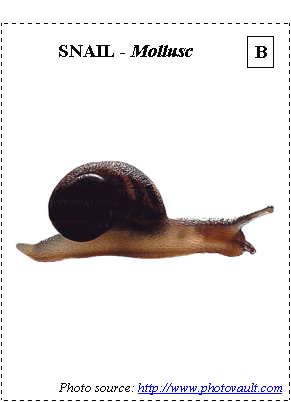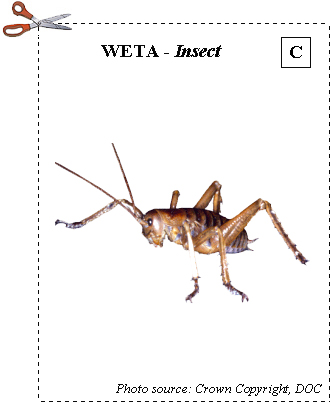Invertebrate animal groups
For each of the animal cards you have been given you are to select three main features that belong to each animal. NOTE: Not all the labels will be needed.
| Animal Picture Cards |
  |
  |
| Features of the Larger Animal Groups |
 |

